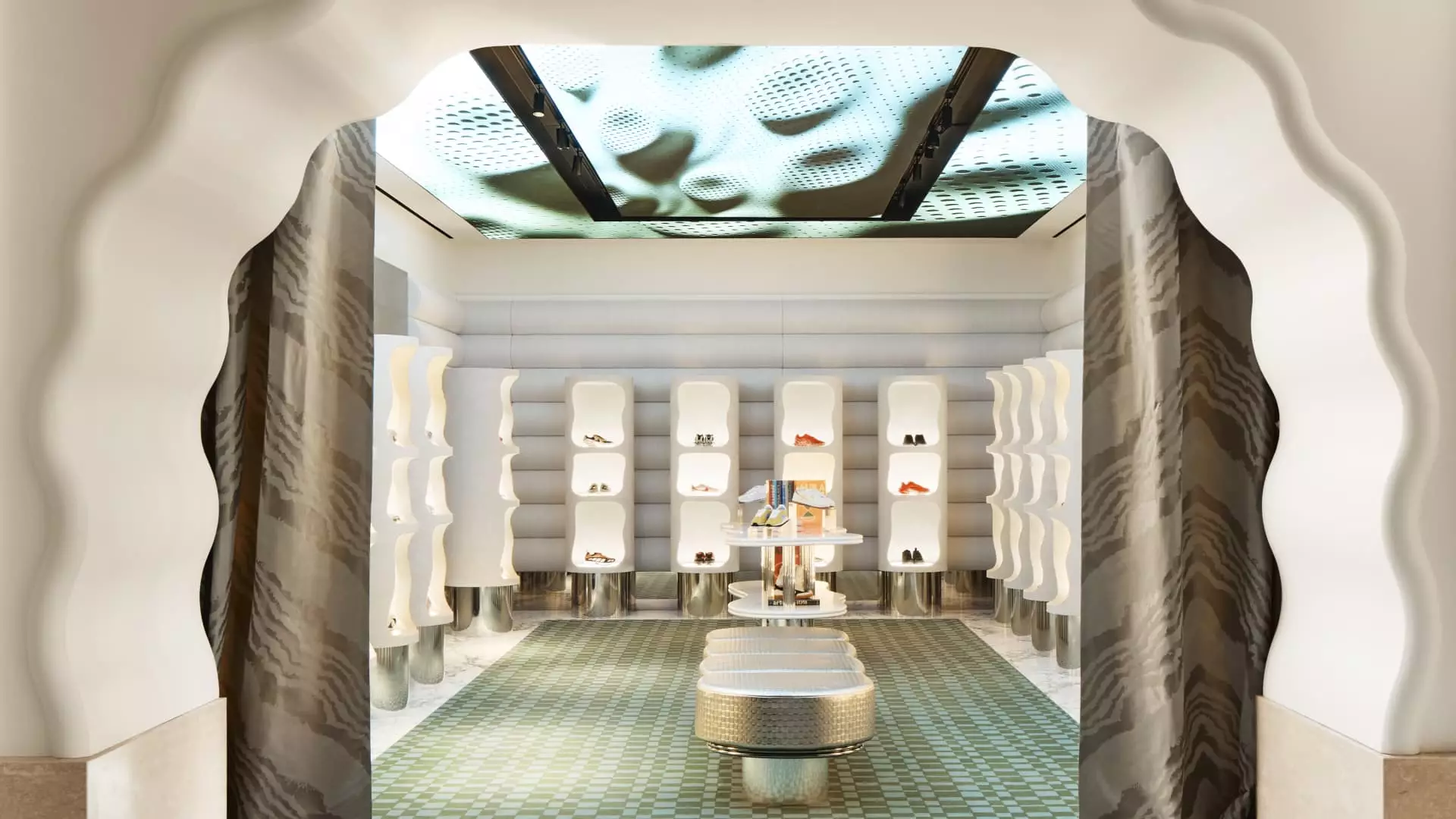The recent debut of French luxury retailer Printemps in New York City marks a significant moment in the evolution of luxury shopping, particularly as we navigate an era of economic uncertainty and evolving consumer behavior. Positioned in the iconic One Wall Street, this 55,000-square-foot shopping paradise embodies a clash of the contemporary and the classic, blending eye-catching architecture with a unique mix of both mainstream and rare luxury brands that resonate with a diverse clientele.
Printemps’s arrival is not merely a new retail offering but a crucial indicator of the retail landscape’s complexity. In a country grappling with fluctuating consumer confidence and inflationary pressures, it stands as both a bold gamble and a strategic maneuver by a brand rooted in French tradition. While other luxury brands might be treading cautiously, the audacity of Printemps might just be what the industry needs—an audacious approach to redefine luxury through an experiential lens.
Experience over Material: The New Luxury Paradigm
One of the most remarkable aspects of Printemps’s U.S. location is its commitment to creating an immersive shopping experience. This is not just about amassing high-end clothing and accessories but rather engaging customers through creative displays, a “shoe forest,” and even spa services that echo the true essence of Parisian elegance. The Red Room, adorned with rich mosaics and transformed into a luxurious haven for shoe enthusiasts, exemplifies this initiative beautifully.
In a world increasingly leaning towards e-commerce, where personalization often takes a back seat, Printemps’s approach highlights the significance of real-life interactions in luxury shopping. It champions the idea that luxury isn’t solely defined by price tags, but by curated experiences that elevate the senses and make consumers feel valued. This perspective aligns with a growing trend among both retailers and consumers who are starting to demand more from the luxury shopping experience.
Navigating Economic Headwinds
Despite the allure of luxury spending, the market is fraught with challenges. Inflation looms large, causing even the most affluent consumers to rethink their discretionary purchases. Reportedly, global luxury sales are expected to grow at a sluggish rate of 1% to 3% annually, a stark difference from the explosive 27% growth seen between 2020 and 2021. Printemps must navigate these turbulent economic waters astutely.
Moreover, while other markets, particularly China, have faltered post-pandemic, Printemps’s CEO Jean-Marc Bellaiche remains undeterred. He emphasizes the resilience of American consumers, who have shown an appetite for returning to shopping despite economic uncertainties. The brand is capitalizing on this potential by integrating more accessible products that appeal to a broader audience, effectively making luxury less intimidating and more inclusive—an intriguing experiment that could pay dividends if executed well.
The Historical Significance of Location
The decision to launch in a historic Art Deco skyscraper adds another layer of depth to Printemps’s strategy. The building’s storied past complements the brand’s heritage, creating a unique intersection between history and modernity. The experience of shopping surrounded by such architectural beauty enhances the luxury feel, fostering a sense of nostalgia while appealing to customers’ appreciation for craft and design.
By choosing One Wall Street, Printemps is not just opening a store; they are positioning themselves as stewards of elegant history, allowing shoppers to engage with both luxury and legacy in the heart of New York City. This infusion of heritage into a contemporary retail setting could redefine the expectations of luxury shopping in urban environments.
Luxury Amidst a Competitive Landscape
Printemps’s entry into the U.S. market coincides with a spike in competition. Other luxury brands like LVMH and Tiffany & Co. are also ramping up their investments in physical locations, indicating that even amidst economic headwinds, the desire for luxurious, live experiences remains strong among consumers. This newfound competition leads to a fascinating paradox: The more exclusive the offerings, the more essential it becomes to connect with consumers on a personal level.
Furthermore, Printemps’s decision to incorporate dining experiences and stylish cafés melds luxury shopping with lifestyle—a move indicative of current trends that marry retail with experiential consumption. By expanding beyond mere sales transactions, the brand could potentially build deeper relationships with customers, enhancing both loyalty and profitability.
Navigating this crowded marketplace will be challenging, but with Printemps’s unique offering, it may just find its niche among the elite shoppers of New York. The blend of history, experience, and unique products places Printemps at the forefront of what luxury shopping can and should aspire to be. While the road is fraught with hurdles, the brand’s audacity could help reinvigorate an industry that desperately needs reinvention.


Leave a Reply